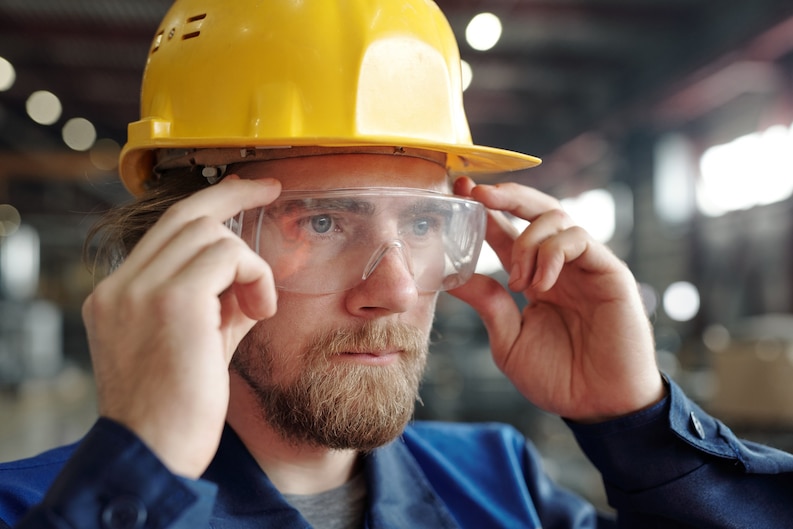Introduction:
Workplace safety is a cornerstone of a thriving and productive work environment. Accidents and risks not only jeopardize the well-being of employees but also impact the efficiency and success of a business. In this blog post, we will explore comprehensive strategies to prevent accidents and mitigate risks in the workplace, fostering a culture of safety and well-being.
1. Comprehensive Training Programs:
One of the fundamental pillars of accident prevention is equipping employees with the knowledge and skills necessary to navigate their work environments safely. Implementing comprehensive training programs ensures that workers are aware of potential hazards, understand safety protocols, and know how to use safety equipment. Regularly update training to incorporate new safety standards and procedures.
2. Establish a Safety Culture:
Promoting a culture of safety is pivotal in preventing accidents. This involves creating an environment where employees feel comfortable reporting potential hazards without fear of reprisal. Encourage open communication about safety concerns, provide regular safety briefings, and recognize and reward individuals and teams that prioritize safety.
3. Regular Workplace Inspections:
Routine inspections of the workplace are essential for identifying and addressing potential risks. These inspections should cover everything from machinery and equipment to the physical layout of the workspace. Regularly check for faulty equipment, frayed wires, slippery floors, and any other factors that could contribute to accidents. Promptly address and rectify issues as they arise.
4. Proper Use of Personal Protective Equipment (PPE):
The correct use of personal protective equipment is paramount in preventing accidents. Provide employees with the necessary PPE based on the nature of their work, and ensure they understand how to use it correctly. Regularly inspect and replace PPE as needed to guarantee its effectiveness.
5. Effective Communication Channels:
Establishing clear communication channels is vital for preventing accidents. Ensure that all employees are aware of emergency procedures, evacuation routes, and contact points for reporting safety concerns. Utilize signage, memos, and regular meetings to reinforce these critical aspects of workplace safety.
6. Ergonomic Workspaces:
Designing workspaces with ergonomics in mind contributes significantly to accident prevention. Properly arranged workstations, comfortable seating, and adjustable equipment reduce the risk of musculoskeletal injuries. Conduct ergonomic assessments regularly to identify and address potential issues.
7. Regular Equipment Maintenance:
Regular maintenance of machinery and equipment is essential to prevent malfunctions that could lead to accidents. Implement a thorough maintenance schedule, and encourage employees to report any equipment irregularities immediately. Timely repairs and replacements can prevent accidents caused by faulty equipment.
8. Encourage Physical and Mental Well-being:
A healthy workforce is better equipped to handle the demands of their jobs safely. Encourage physical fitness and provide resources for mental health support. Well-rested and stress-free employees are more alert and less prone to making mistakes that could lead to accidents.
9. Emergency Response Plans:
Accidents can still occur despite preventive measures, so having well-defined emergency response plans is crucial. Conduct regular drills to ensure that employees are familiar with evacuation procedures, first aid protocols, and emergency contacts. An organized and practiced response can mitigate the impact of accidents.
10. Incident Reporting and Analysis:
Establish a transparent incident reporting system where employees can report accidents, near misses, or potential hazards without fear of reprisal. Analyze reported incidents to identify patterns or trends, allowing for targeted interventions to prevent similar occurrences in the future.
11. Continuous Improvement:
Workplace safety is an evolving aspect that requires ongoing evaluation and improvement. Regularly assess the effectiveness of safety measures and seek feedback from employees. Use this information to refine safety protocols, update training programs, and implement new measures as needed.
Conclusion:
Preventing accidents and mitigating risks in the workplace is a collective responsibility that requires commitment from both employers and employees. By establishing a comprehensive safety program, fostering a culture of safety, and continually improving safety measures, businesses can create a work environment where the well-being of employees is prioritized. The investment in workplace safety not only safeguards individuals but also contributes to the long-term success and sustainability of the organization. Remember, a safe workplace is a productive workplace.




